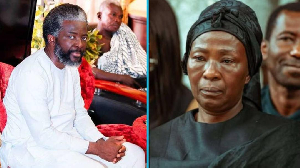Every year, globally, about 250,000 children develop cancer with 80 per cent of such cases occurring in low and middle income countries.
In Ghana, 30 per cent of expected cases are seen at the treatment centres.
A statement signed by Professor Lorna Renner, Head of Childhood Cancer of the Korle Bu Teaching Hospital, and copied to the GNA, said the commonest childhood cancers were lymphomas, leukaemias, eye cancer and kidney cancer which collectively formed over 70 per cent of cancers.
Treating a child with cancer definitely has cost benefits. Total estimates for treating a lymphoma is about GH?1,500 for cure, with kidney and eye cancers costing about GH?4,000.
The statement said a child cured from cancer had potentially at least 50 years of productive life for the nation.
However, up to 20 per cent of those cases were presented at a late stage and the team could then offer only palliative care instead of curative treatment.
Unfortunately Ghana had only two comprehensive treatment centres; one in Accra and the other in Kumasi.
The statement said it was regrettable that after treatment was started, up to 40 per cent abandon treatment mainly as a result of the costs the families had to bear.
It said: “Breast and cervical cancers are covered and soon prostate cancer will be on NHIS. What about Ghana’s future leaders and workforce?”
Ghana had a cancer control strategy, launched in 2015, which is yet to be fully implemented, it said.
Recently, a meeting was held in Accra with the aim to explore and discuss how stakeholders could be involved to improve access to care for children affected by cancer.
It also sought to inform, engage and initiate support for building and enhancing Ghana’s capacity for successful childhood cancer management.
At the end of the meeting, strong recommendations were made that: more advocacies were required with developmental partners and childhood cancer should be included on the next health sector agenda.
NGOs in Health and Civil Society Organisations should be involved in awareness creation.
The media should be a strong partner in all these advocacy and awareness creation; advocacy at policy level should be undertaken to include childhood cancer in the benefits package of the NHIS.
It was also recommended that early detection of childhood eye cancer at community level must be a priority consideration to save lives of children and adolescents affected by cancer.
Health News of Thursday, 18 February 2016
Source: GNA
Children about 250,000, develop cancer annually
 File photo
File photo












